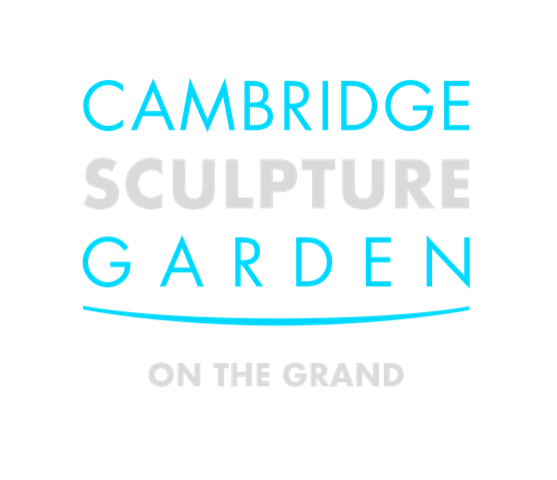
The Cambridge Sculpture Garden (CSG) enhances and preserves a unique oasis of green space along the Grand River providing free and open access for visitors to experience contemporary sculptures and art, picnicking, walking, biking, or quiet contemplation.
Registered Charity
The Cambridge Sculpture Garden is a registered charitable organization managed by a volunteer committee and is supported by the City of Cambridge, community donors, and granting organizations.
Sculptures / Art
The Cambridge Sculpture Garden currently has 5 permanent sculptures and one mural. Permanent works are selected by the CSG committee and made possible through artists' generosity, grants, and donor support. Works are accepted after carefully weighing each situation to determine if the work is durable and suitable for long-term outdoor display (without significant expense for care), public safety, compatibility with the site and consideration for how they complement other works.
Temporary exhibitions are also curated and displayed for 2 years. These projects are made possible through grants from organizations that fund the arts. Artists, writers and adjudicators are paid according to CARFAC recommended fees.
Gardens
Our garden enhances the experience of the river walk along the Trans Canada Trail which connects to the downtown Galt City Centre. The land has been dramatically contoured to enhance the setting for the sculptures. We have won several environmental awards and highlight native species in one part of the garden. Our Grand Oak Tree is the only designated historical tree in Cambridge and only one of eleven in the province.
Land Acknowledgement
The land on which you now stand has been inhabited by Indigenous peoples for at least 10,000 years. While the exact identity of the very first cultural groups that lived along the Grand River is unclear, the archaeological record shows that the Iroquoian-speaking Attawandaron (Neutral), Huron-Wendat, and Haudenosaunee nations first appeared in the vicinity of Cambridge approximately 1,000 years ago. The Algonquian-speaking Anishinaabe nations lived to the north. Because this region was the contact zone between two distinct groups, the Haudenosaunee and Anishinaabe, a wampum agreement was struck between them centuries ago known as the Dish With One Spoon, which signified that the two nations were to peacefully share the resources of the area. Under the terms of the Haldimand Deed of 1784, the British Crown gave to their allies the Six Nations/Haudenosaunee six miles on either side of the river, from its mouth to its source, approximately one million square acres. This was in compensation for the lands they lost in New York State following the American Revolution. Today, Haudenosaunee and Anishinaabe peoples continue to live on their ancestral homelands along the Grand River.
-written by Rick Monture


